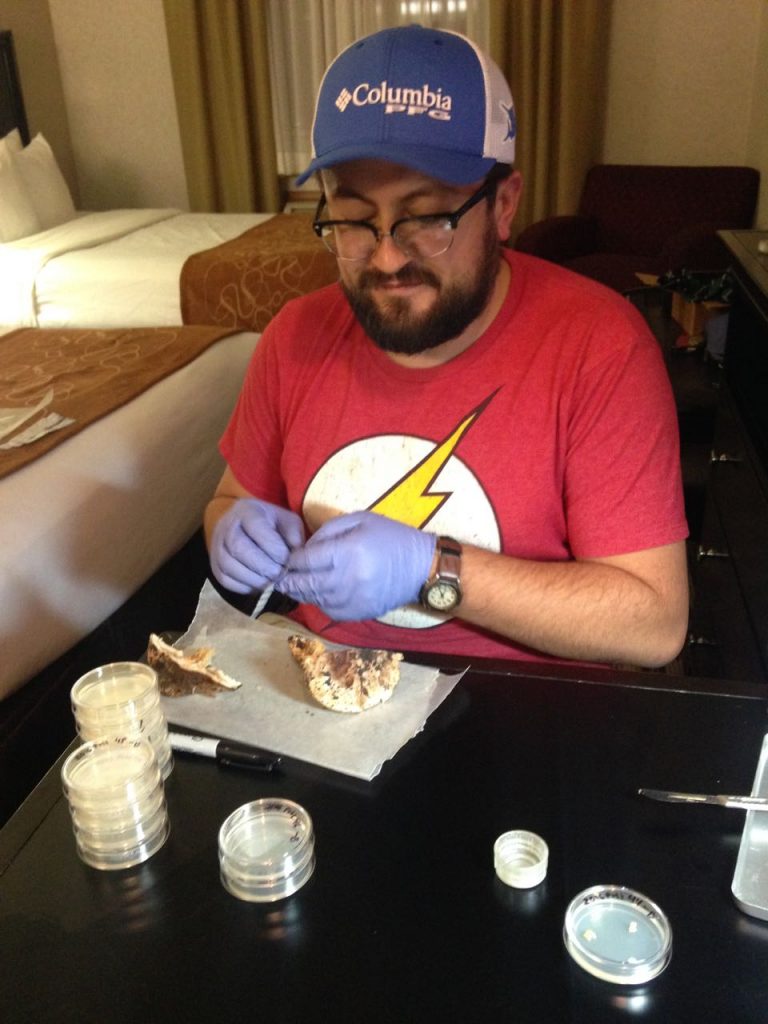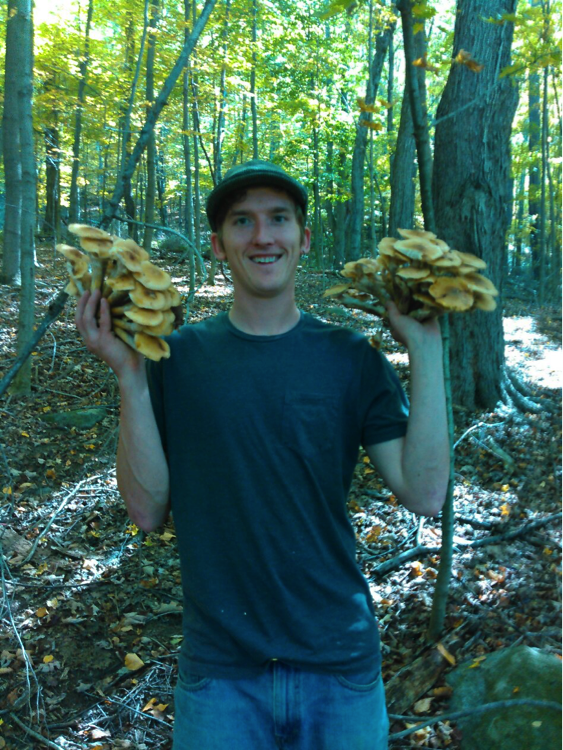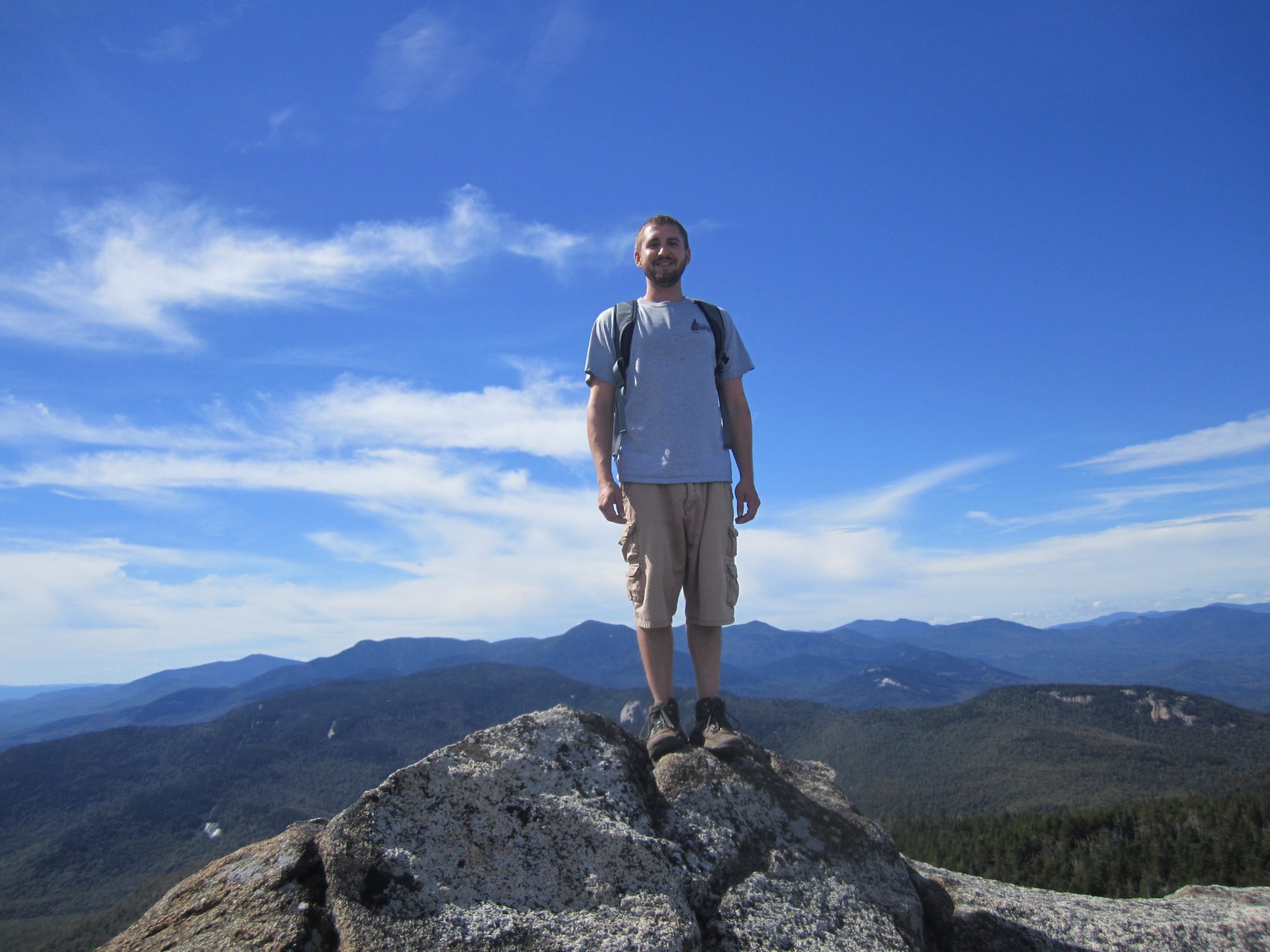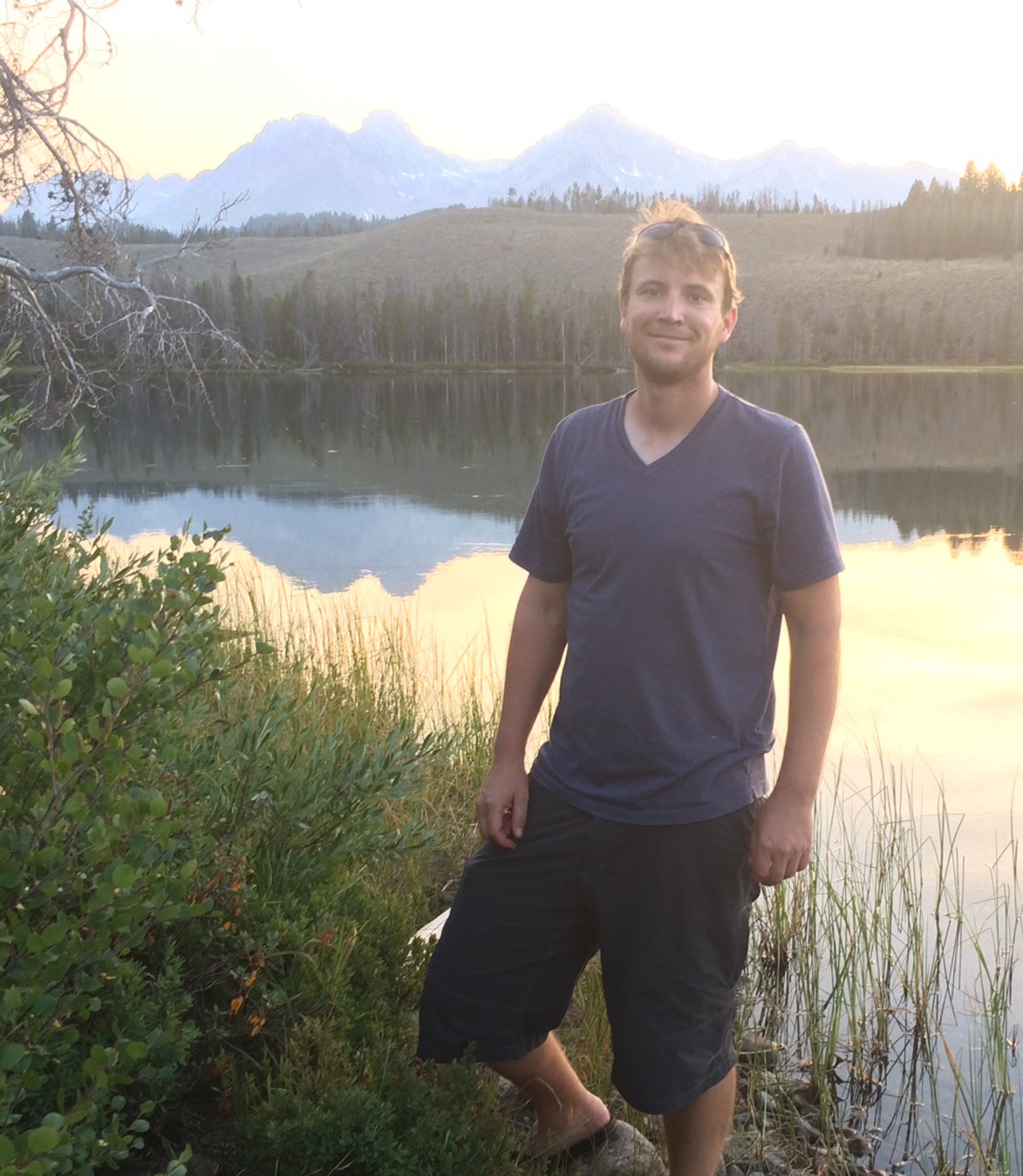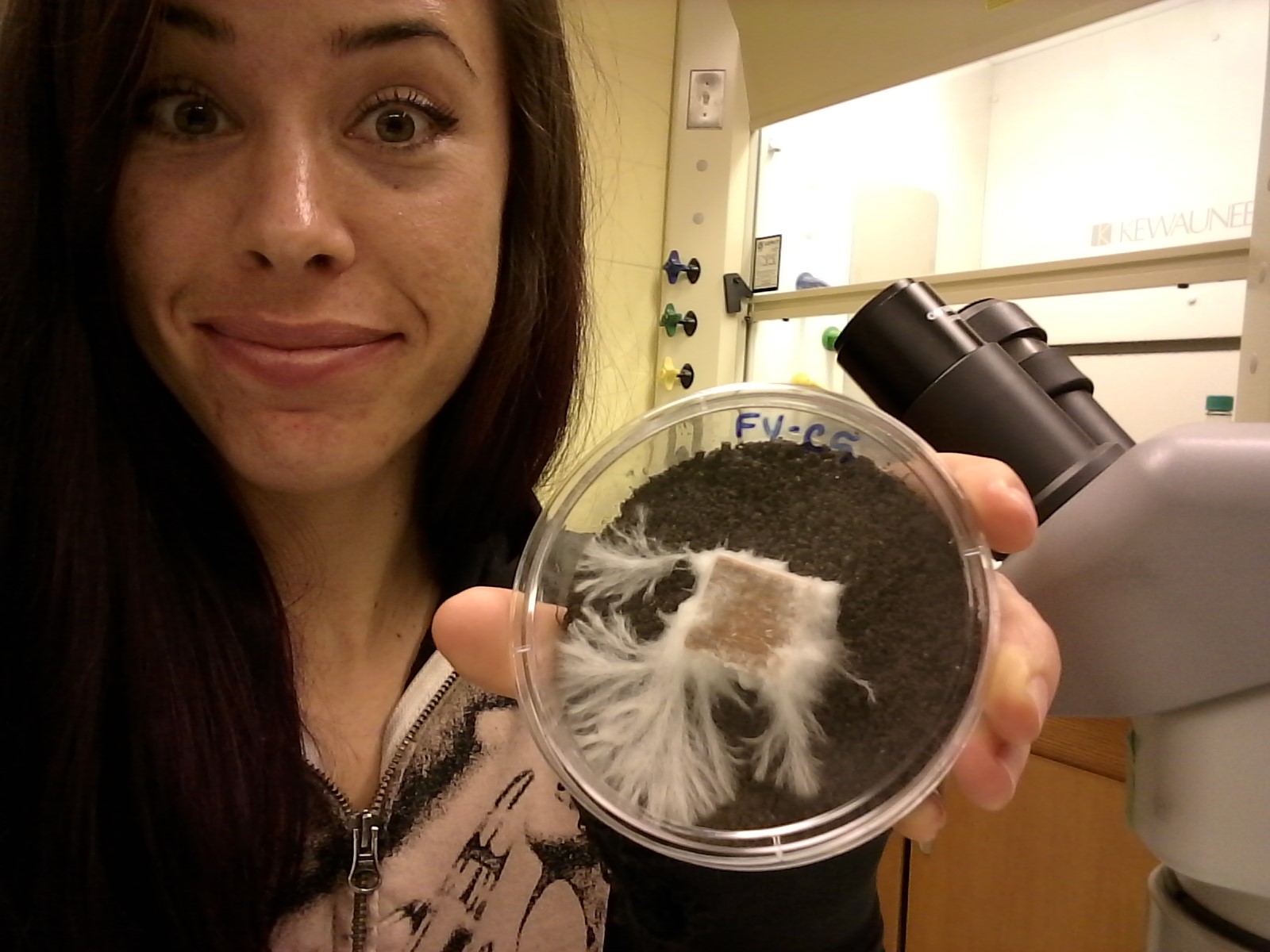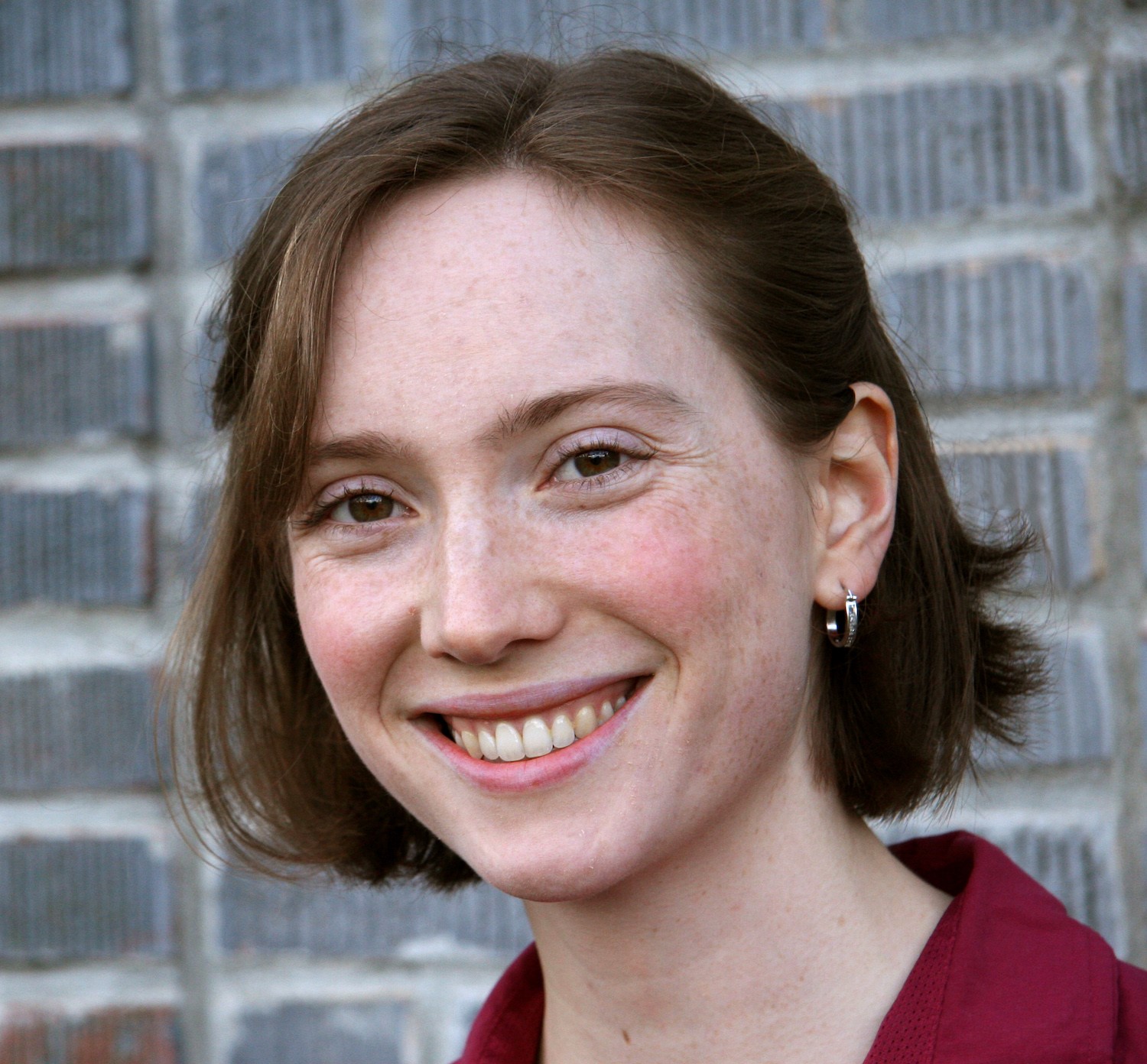Abigail Courtney grew up just outside of Manhattan in New York. She moved to New Jersey for her undergraduate education, where she got her B.S. in bioinformatics from Ramapo College of New Jersey. While there, she worked on an undergraduate research project titled Responses of growth, antioxidants and gene expression in smooth cordgrass (Spartina alterniflora) to various levels of salinity. While in New Jersey, Abbie completed a summer program through Rutgers University studying the molecular evolution of RNA-dependent RNA Polymerase in ticks.
From there, Abbie moved to the University of Georgia where she is currently a graduate student in Zachary Lewis’ lab. Her thesis is titled H2A.Z and Polycomb Repressive Complex 2 in Neurospora crassa: An unlikely partnership, where she examines how the three-dimensional structure of DNA affects gene expression. The Lewis lab is interested in identifying the mechanisms that govern the establishment and maintenance of silent chromatin in the filamentous fungus Neurospora crassa. The Polycomb Repressive Complex 2 catalyzes the methylation of Lysine 27 on Histone 3 (H3K27me2/3). Polycomb group proteins assemble specialized repressive chromatin domains that are critical for proper gene regulation in plants, animals, and some fungi. The specific mechanisms of how Polycomb Repressive Complex 2 target domains are established and maintained are poorly understood. Abbie recently discovered that the histone variant H2A.Z is required for normal patterns of H3K27me2/3 in N. crassa. H2A.Z has been implicated in DNA repair, gene repression, and transcriptional activation. The focus of her thesis project is to define the mechanisms of these context-specific H2A.Z functions, including establishment or maintenance of H3K27me2/3. Abbie is a 2017 recipient of the NSF Graduate Research Fellowship, MSA best graduate poster, and a GSA Career Development Symposia Grant to work with six other students from the University of Georgia to develop the Southeast Mycology Symposium (SEMS).

What are your career goals? What are your plans for after your PhD?
That’s what I am working on figuring out this year! After my PhD, I plan to continue my adventure in fungal biology working as a postdoc.
What is your favorite mushroom/fungus?
I think I am a little biased here, but I’m going to have to go with Neurospora crassa.
What do you like to do in your free time? What are your hobbies?
I read, crochet, and volunteer at the local animal shelter. I love to cook and prepare my meals for the entire week every Sunday.
Anything else you’d like to talk about (Career goals, outreach, science communication, photography)?
I am the VP of Digital Media for S.P.E.A.R. – Science Policy Education, Advocacy, and Research. SPEAR is a student organization that aims to provide a resource for discussion of science policy issues as well as a platform for initiating advocacy and promoting research within and beyond the University of Georgia.
I am the social media coordinator and webmaster for the UGA Fungal Group.
Every year I judge the junior division (grades 6-8) at the Georgia Science and Engineering Science Fair.
I am a volunteer expert for the “Ask an Expert” section of the website Sciencebuddies.com. I help guide students who have questions related to their science fair projects.
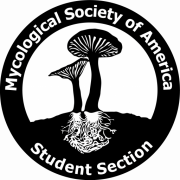
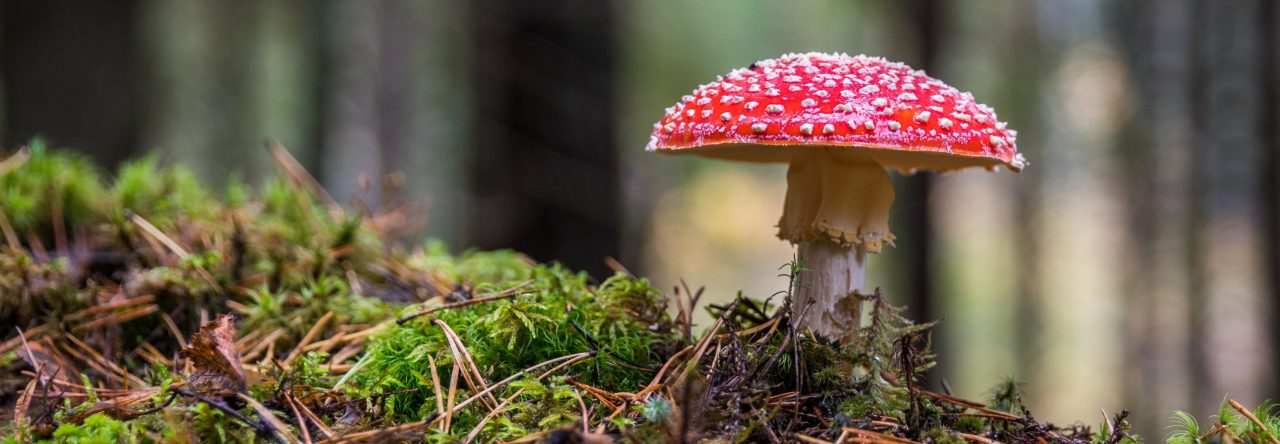
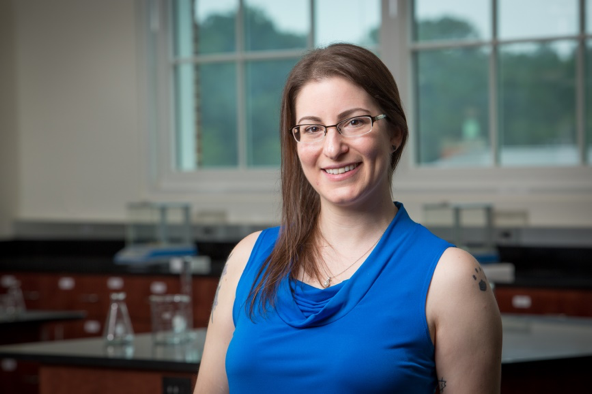


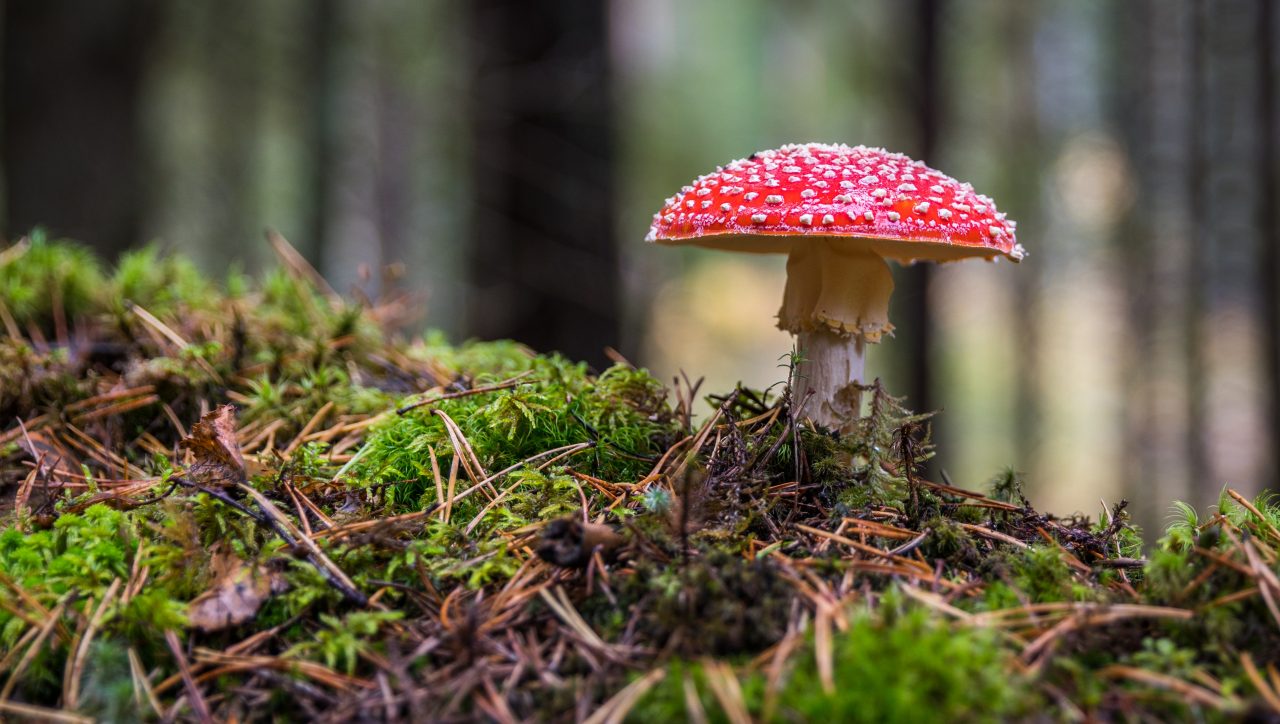

 find synergistic effects between fungi with different decay strategies when co-inoculated in diesel-contaminated soil. I aim to find out whether fungi that degrade different fractions of wood can cooperate to degrade different fractions of diesel fuel to increase mycoremediation of soil. My background is in Environmental Studies, and my research interests are driven by a search for solutions to problems that lie at the interface between environmental sustainability and social justice. A component of this drive is an interest in community organizing, enabling groups to achieve greater access to resources to accomplish their goals than individuals alone are able to reach independently. In alignment with this interest, I would like to serve as secretary on the MSA Student Section’s Board. I enjoy helping to provide a supportive community for other mycology students, bolstering our ability to hear and be heard by our broader academic cohort, and more easily learn about resources and events available to us. I have served one year as the MSA Student Section secretary, and I currently serve as the president of the UW-L Mycology Club, after serving the club for two years as its vice president.
find synergistic effects between fungi with different decay strategies when co-inoculated in diesel-contaminated soil. I aim to find out whether fungi that degrade different fractions of wood can cooperate to degrade different fractions of diesel fuel to increase mycoremediation of soil. My background is in Environmental Studies, and my research interests are driven by a search for solutions to problems that lie at the interface between environmental sustainability and social justice. A component of this drive is an interest in community organizing, enabling groups to achieve greater access to resources to accomplish their goals than individuals alone are able to reach independently. In alignment with this interest, I would like to serve as secretary on the MSA Student Section’s Board. I enjoy helping to provide a supportive community for other mycology students, bolstering our ability to hear and be heard by our broader academic cohort, and more easily learn about resources and events available to us. I have served one year as the MSA Student Section secretary, and I currently serve as the president of the UW-L Mycology Club, after serving the club for two years as its vice president. University. I joined the Trail lab this past fall, and I work on Fusarium graminearum-host interactions, specifically the defense response to F. graminearum in barley trichomes. Previously, I was a bacteriologist, so I’m new to this fungal world! I would like to run for the position of Communication Chair, so I can share my excitement about mycology with as many people as possible! I hope to get involved with the MSA student section to meet other mycology students, and help promote the organization and the student section to other mycologists I meet. In the past, I have been outreach chair for the Undergraduate Genetics Association at University of Wisconsin-Madison, president of the same organization, and co-founder of the Plant Pathology Undergraduate Club. I’m also recently elected as Outreach/Communication Chair for the Mid-Michigan chapter of Graduate Women In Science, where I’ll serve for the 2017-2018 year. Through these outreach experiences I’ve learned how to communicate science to general audiences, and I think I could apply these skills to the Communication Chair position for the student section. I hope to bring my newfound excitement about mycology to the student section and beyond!
University. I joined the Trail lab this past fall, and I work on Fusarium graminearum-host interactions, specifically the defense response to F. graminearum in barley trichomes. Previously, I was a bacteriologist, so I’m new to this fungal world! I would like to run for the position of Communication Chair, so I can share my excitement about mycology with as many people as possible! I hope to get involved with the MSA student section to meet other mycology students, and help promote the organization and the student section to other mycologists I meet. In the past, I have been outreach chair for the Undergraduate Genetics Association at University of Wisconsin-Madison, president of the same organization, and co-founder of the Plant Pathology Undergraduate Club. I’m also recently elected as Outreach/Communication Chair for the Mid-Michigan chapter of Graduate Women In Science, where I’ll serve for the 2017-2018 year. Through these outreach experiences I’ve learned how to communicate science to general audiences, and I think I could apply these skills to the Communication Chair position for the student section. I hope to bring my newfound excitement about mycology to the student section and beyond! I’m crazy, but I’m just looking for mushrooms! I’m a first year graduate student at UW Madison studying in Anne Pringle’s lab and I have the privilege of studying the ecology and evolution of mushroom forming fungi every day. My current project is studying a genus of fungi, Amanita, which includes both saprotrophic (plant degrading) and ectomycorrhizal (plant partner) fungi. I am dissecting the genomes of these fungi to determine the genes which are characteristic of each of these distinct (or so we think) ecologies. Part of this research is finding these mushrooms in their natural environments, which means I get to go hiking in the woods hunting for mushrooms and get my hands dirty regularly! One of my favorite things about studying fungi is being able to teach others the amazing things I learn about these crazy organisms. I think being part of the student executive board is a great way to reach more people interested in studying fungi and fungal ecology. When I first went to an MSA conference, the Student Section welcomed me even though I wasn’t a student at the time! I want to give back to that community by volunteering my time on the executive board as the merchandise chair. I have experience ordering tshirts and stickers for my previous lab, and I now have a few months’ experience in the merchandise chair position with the student section that have been very informative. If re-elected, I will dedicate time and effort towards supplying fun and enticing merchandise to raise money for this awesome student section of MSA!
I’m crazy, but I’m just looking for mushrooms! I’m a first year graduate student at UW Madison studying in Anne Pringle’s lab and I have the privilege of studying the ecology and evolution of mushroom forming fungi every day. My current project is studying a genus of fungi, Amanita, which includes both saprotrophic (plant degrading) and ectomycorrhizal (plant partner) fungi. I am dissecting the genomes of these fungi to determine the genes which are characteristic of each of these distinct (or so we think) ecologies. Part of this research is finding these mushrooms in their natural environments, which means I get to go hiking in the woods hunting for mushrooms and get my hands dirty regularly! One of my favorite things about studying fungi is being able to teach others the amazing things I learn about these crazy organisms. I think being part of the student executive board is a great way to reach more people interested in studying fungi and fungal ecology. When I first went to an MSA conference, the Student Section welcomed me even though I wasn’t a student at the time! I want to give back to that community by volunteering my time on the executive board as the merchandise chair. I have experience ordering tshirts and stickers for my previous lab, and I now have a few months’ experience in the merchandise chair position with the student section that have been very informative. If re-elected, I will dedicate time and effort towards supplying fun and enticing merchandise to raise money for this awesome student section of MSA!